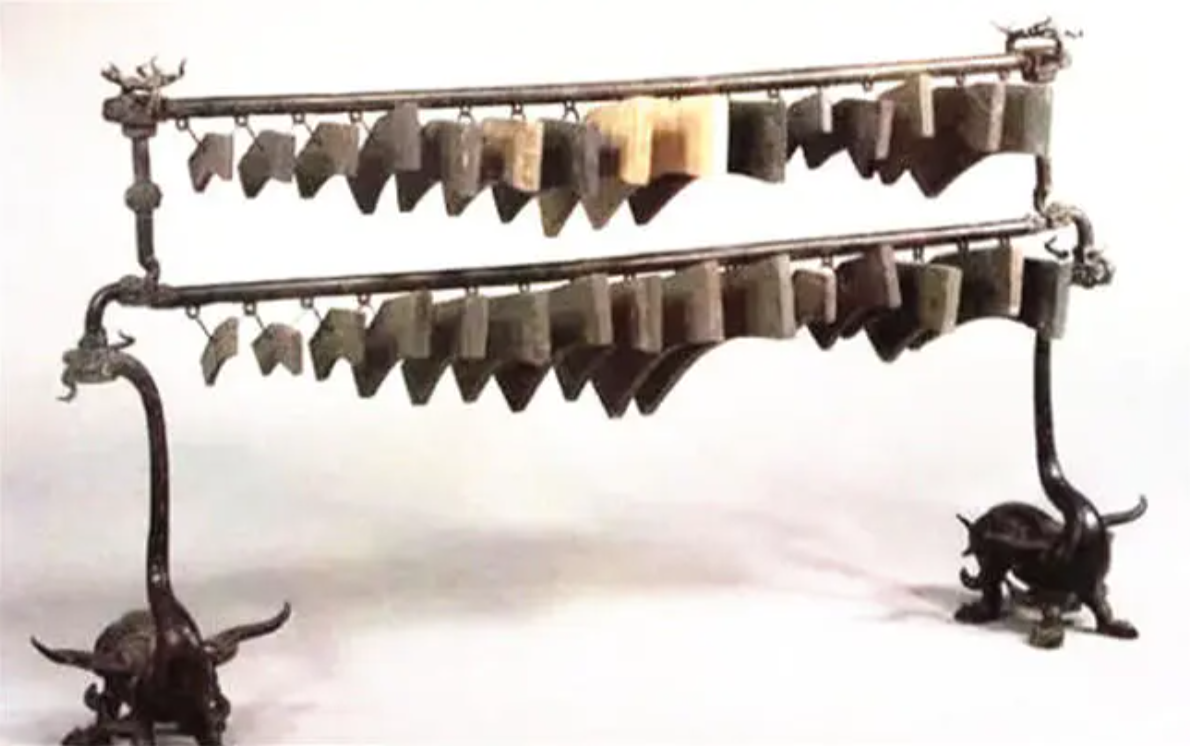Zeng Houyi's chime for the ensemble "Sound of Gold and Stone"
Like chimes, chimes are percussion instruments in ancient China. They are often matched with chimes to play the "sound of gold and stone". The chimes are sonorous, clear, bright and penetrating. Zeng Houyi's chime, a national first-class cultural relic, is as famous as Zeng Houyi's chime. The chimney frame is made of bronze, with the inscription "Zenghou Yi's holding and end" (many cultural relics unearthed from Zenghou Yi's tomb have the same or similar inscriptions). The chimes here are made of stone and engraved with numbered or musical inscriptions.

Braided chime frame: Bronze zigzag gold chime frame, composed of a pair of round carved monsters and the uprights attached to their heads as keels, and two round rods as beams, with a single-sided and double-layered structure. The column attached to the top of the animal is mortised and tenoned with the beam from the waist and the top. The bottom of the beam is equidistantly welded with cast copper rings, and the chimes are hung with hooks. The chime frame is decorated with staggered gold cloud patterns with smooth lines, and the 32 chimes are made of limestone or marble.

There is an inscription on the tongue of a chime animal, "Zeng Houyi's role is to hold the end". The chime is engraved with the serial number (of which a small amount is written in ink) and the inscription of music and law, with a total of 708 characters, which is similar to the inscription of Zeng Houyi's bell. After restoration research, it is known that its sound range spans three octaves and twelve semitones are complete. The sound is crisp and unique. At the same time, three inscribed chime boxes and two painted chime hammers were unearthed. When playing, one person needs to hold the hammer with both hands and hit the ground.
 渝公网安备 50010702504639号
渝公网安备 50010702504639号